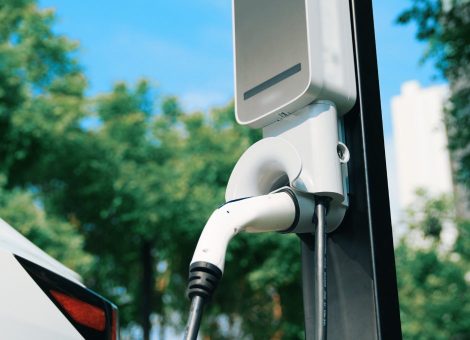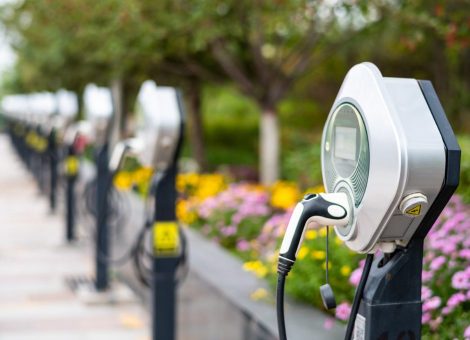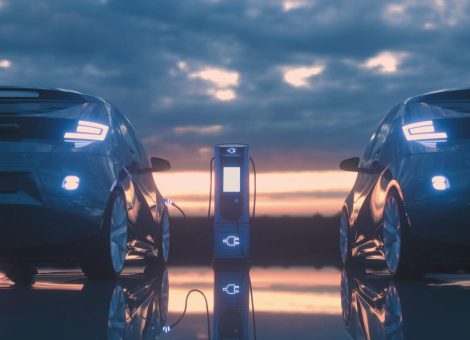The Electric Opportunity: Retailers set to win big in the race for mass EV adoption
- Two-thirds (66%) of drivers are always on the look out for new places to charge their EVs
- 58% of drivers often visit shops or businesses that offer EV charging, even if they’re not actively looking to charge their car
- Nearly three-in-five (59%) of drivers spend more money at shops or businesses that offer EV charging
Consumers are paving the way for retailers to take prime position in the growing electric vehicle (EV) market, with 57% of EV drivers saying they’d like to see more charging points at shopping venues. In comparison, 41% want EV charging points at existing fuel stations, signalling a shift for traditional retailers and a need for them to re-evaluate and re-establish their offering. This is according to research launched today by Kalibrate, mapping the evolving habits, traits, and needs of electric vehicle drivers globally.
As the adoption rate of EVs continues to multiply, the report, The Electric Opportunity, indicates that EV drivers’ behavior is going to shape traditional petrol and diesel fuel providers’ services, with two-thirds (66%) saying they are always looking for new places to charge, for example at shopping or hospitality venues.
While this behavior shift offers a significant opportunity for retailers, it also presents a challenge.
The research finds that although nearly nine-in-10 organizations believe the EV market is a future revenue driver, over half (55%) think the market is too unpredictable for them to make concrete plans and 57% find it difficult to anticipate where EV charging infrastructure would be most useful. Thanks to this, a further 52% say they have not even started developing their EV strategy.
Commenting on the research, Oliver Shaw, CEO at Kalibrate said: “EVs are the future of transport – that’s for certain. But as more consumers turn to EVs, the challenge of creating a robust, strategic, and profitable EV charging network is only going to grow.
“Big questions remain for retailers: what infrastructure do drivers need to make the switch to EVs? How are refueling habits going to change, and how have they already changed? What do the EV drivers of today look like, and what will they look like tomorrow? Clearly, retailers are battling a number of unknowns and it’s not surprising that they are unsure how to respond.”
While retailers may be lagging behind in developing their EV strategy, the research indicates they are excited about the potential revenue boost offered by EVs, with more than half (53%) saying that EV charging will bring between 31 – 50% more revenue into their business.
However, despite this excitement for new revenue streams, the findings also show that consumers are concerned about the price of charging their EV, with nearly three-in-five (58%) claiming it is too expensive. This may explain why 53% of retailers say pricing their EV charging offering is difficult, as is the process of building a business model that can address consumers’ pricing expectations.
Yet, in the face of this, retailers are still prepared to adapt quickly to the growth in EV drivers, with nearly three-in-five (57%) saying they’d like to better understand the characteristics and behaviors of EV drivers, and nearly two-thirds (64%) think their EV strategy will change over the next three years.
Shaw continued, “New charging points are being added to the network every day, and it’s crucial that we understand exactly where these are needed most and how to strike the right balance for pricing, rather than relying on our traditional understanding and assumptions about how drivers typically fuel their cars.
“While new EV drivers might have their own distinct behaviors and preferences, our research suggests that they’ll change over time. For instance, the longer you own an EV, the more you will encounter new places to charge, and the more you will diverge from traditional charging points.
“In essence, the opportunity is up for grabs for the retailers that can understand these types of changes in behavior, and use the right data to predict, adapt, and respond to the move of EV charging beyond the forecourt,” Shaw concluded.
_ _ _ _ _
Methodology
Kalibrate conducted a survey of 1,433 consumers and 520 retail business stakeholders over 10 countries: USA, UK, Germany, India, Canada, Norway, Finland, Denmark, Sweden, and Iceland.
Click here to download your complimentary copy of the report.
Read more articles about:
Electric VehiclesSubscribe and get the latest updates
You may unsubscribe from our mailing list at any time. To understand how and why we process your data, please see our Privacy & Cookies Policy
Related posts
Electric Vehicles
Kalibrate launches EV Pricing solution to transform electric vehicle charging operations
Launching Kalibrate EV Pricing - the intelligent EV pricing software for strategic CPOs

Electric Vehicles
The EV charger pricing challenge
As electric vehicles (EVs) become more prevalent, the task of managing EV charger pricing presents unique challenges...

